From the Neolithic period to modern times, jade has always been treasured by the Chinese. Its role has developed according to the changing nature of China’s imperial landscape – moving, for example, from a ritual object to a decorative one – and yet the Chinese have remained obsessed with jade for its beauty, its metaphors and the magical powers they believe it possesses. Even today, most Chinese still believe that jade can act as a talisman to protect the body from harm.
An exhibition currently at the Musée Guimet in Paris, ‘Jade: From Emperors to Art Deco’, traces the development of jade and its artistic highpoints (until 16 January 2017). The objects on show range from the Neolithic period to the 19th century, a timespan that makes clear the role of jade in China’s long history. The exhibition includes works from the collection of the National Palace Museum, Taipei – part of the original imperial collection which was removed to Taiwan in 1949 at the end of the Civil War in China – alongside works from the imperial collection of Fontainebleau, such as burial objects, scholar’s studio pieces, imperial trinkets and house decorations.
The Chinese have a broad definition for jade (yu in Chinese). The first dictionary Shuowen jiezi (‘Explaining Simple and Analysing Compound Characters’), compiled by Xu Shen in AD 100, describes jade as a stone that is beautiful and that possesses five virtues. This text was strongly influenced by Confucius who compared the qualities of jade to a gentleman’s personality in the 5th century BC. Even so, we do not know exactly what was meant by jade at that time, and even today, when Chinese scholars and curators compile catalogues, they tend to include agate, crystal, turquoise and other similar stones within the category of jades – indeed, these are materials commonly seen from archaeological finds.
In the modern sciences of mineralogy and gemology, jade refers to two different mineral groups: nephrite (hardness 6 to 6.5 on Mohs scale) and jadeite (hardness 6.75 to 7). Although jade mines can be found in many parts of China, the best quality and the largest quantity came from the northwest, in Xinjiang. The jade used in China appears to have been almost entirely nephrite or nephrite-related until the 18th century, when jadeite from Burma began to be imported. The colour of nephrite ranges from yellow, white, cream, green and spinach green through to black; jadeite is mainly apple green or lavender blue. In terms of appearance, nephrite has a greasy, lustrous surface, while jadeite has a shiny, glassy aspect.
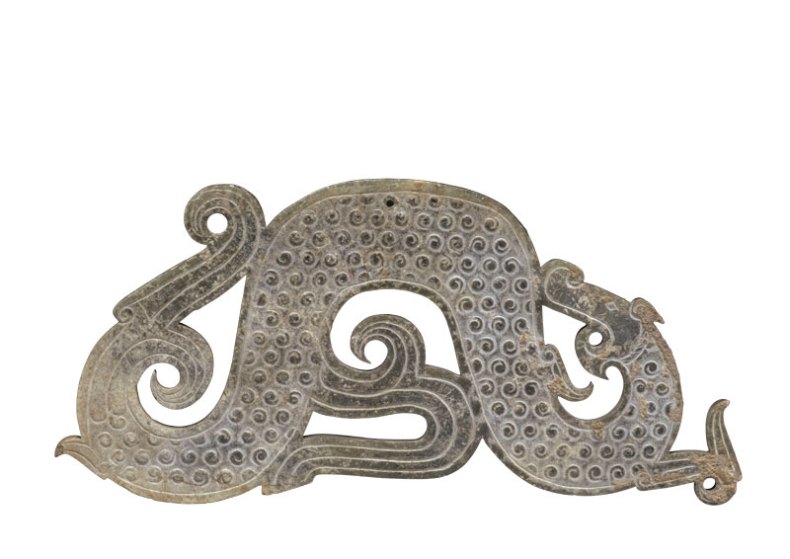
Jade pendant in the shape of a dragon, Chinese, Warring States Period (475–221 BC). © RMN-Grand Palais (Musée Guimet, Paris)/Thierry Olivier
Jade is a very difficult material to work with, even when using tools that are available to modern-day craftspeople. Prehistoric jade-carving techniques were reconstructed in 2006 by a team at Shanghai’s Fudan University: the stone was cut using sandstone or slate, in conjunction with quartz sand and water, and then shaped with sandstone rubbers. Holes were made using wood, bone, or bamboo drills with wet sand as an abrasive. The holes were conical in shape, as the drill bits rapidly wore away. The team calculated that it would have taken 68.5 hours to cut jade to a slide of thickness of 21mm from a 44.3 x 17.7cm pebble. Metal tools were used in the Bronze and Iron Ages, but it would still have taken 13.5 hours to cut to a thickness of 17.7mm, according to the Fudan University team. The complicated process and time-consuming nature of jade carving must always have involved a large workforce in a workshop environment and was consequently expensive. In early times, the ownership of jades was therefore confined to the highest levels of China’s hierarchical society.
The value of jade can be established from the various stories and legends, the most famous of which is ‘Returning the Jade Disc Intact to Zhao State’ in Han Fei zi, by Han Fei (d. 233 BC):
A piece of jade was discovered in the hills of Chu state by Bian He during the Warring States period [475–221 BC]. He was so excited about his discovery that he hastened to show it to the ruler, King Li of Chu. However, King Li didn’t believe him and had one of his legs cut off for deceiving the ruler. When King Li died, the throne was passed on to King Wu, and Bian He presented the stone again; King Wu, again, did not believe him and had his other leg amputated as well. It was not until the next ruler, King Wen, ascended the throne that he had his craftsman work on the stone. To their astonishment, they found a piece of incomparable white jade, which was made into a jade disc that was named as He Shi Bi [literally ‘The Jade Disc of He’] in honour of its discoverer.
In Shi ji (‘Records of the Grand Historian’), compiled by the Han historian Sima Qian (146–86 BC), the story continues that the jade disc was stolen from Chu and eventually sold to the Zhao state. In 283 BC King Zhaoxiang of the Qin state offered 15 cities to Zhao in exchange for the jade disc. This is the origin of the famous Chinese phrase jia zhi lian cheng (‘valued in many cities’). The Zhao minister Lin Xiangru was dispatched to take the jade disc to Qin, but it became clear that Qin would not uphold its side of the bargain. Lin threatened to smash the jade disc but subsequently escaped back to Zhao with the disc intact. The story continues with the Qin conquering the Zhao in 228 BC; when the king of Zhao submitted, he presented the disc. The disc vanished from the records soon after it came into the Qin’s possession.
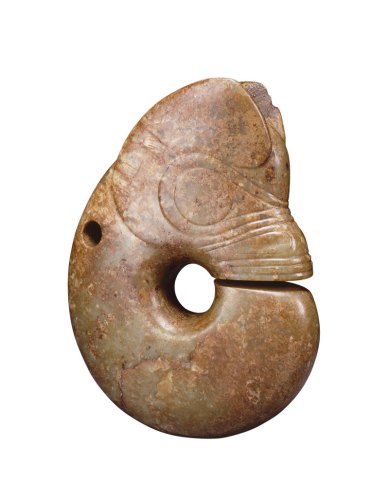
Jade pig-dragon (zhulong), Chinese, Neolithic Hongshan culture (c. 3500–2500 BC), jade. © RMN-Grand Palais (Musée Guimet, Paris)/Thierry Olivier
Although the Chinese are obsessed with jade – antique shops in China are full of jade rather than gold or other gems – interest was concentrated in certain areas and it is not ubiquitous in Chinese history. Before the unification of China in 221 BC, the country was split into several states, each with its own language, character set, currency and burial features. While jade dragon pendants were found as part of longer pendants in most regions, large size jade discs were mainly used in eastern China to cover the bodies of high-ranking individuals in a custom that may have been passed down from the Liangzhu period.
Since the Neolithic period, jade has always been the only material buried close to the bodies of important figures. In the Hongshan culture (c. 3500–c. 2500 BC) in present-day northeast China, jades were carved in the shape of massive, strange, coiled monsters, sometimes referred to as pig-dragons, and also bracelets and head ornaments. All of the jades found in Hongshan are in some sense ornaments, as they seem to have been attached to garments or to the body. About 1,000 years after the Hongshan culture, and more than 1,500 km away in present-day southern Jiangsu and northern Zhejiang, large quantities of jades, including cong (tubes, Fig. 3), bi (discs) and yue (axes), were placed in tombs around and on the bodies of high-ranking individuals. These objects have been identified as belonging to what is now known as the Liangzhu culture (c. 3000–2000 BC). The quantity of jades found in tombs reflects the social status of the deceased and the positions in which they were placed around the body indicate that they were intended to provide a certain degree of protection.
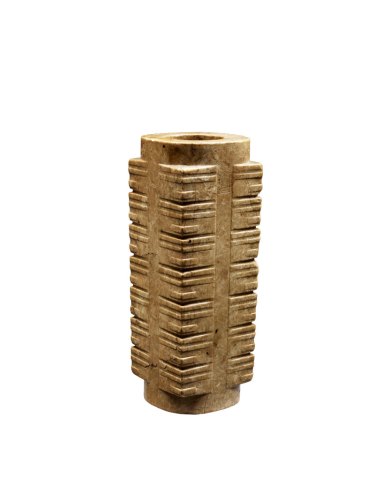
Jade tube (cong), Chinese, Neolithic Liangzhu culture (c. 3000–c. 2000 BC), jade. © RMN-Grand Palais (Musée Guimet, Paris)/Thierry Olivier
The unification of China under the Qin (221–206 BC) and Han (206 BC–AD 220) dynasties brought together many regional burial features, including the use of jades, in the area represented by present-day eastern China. As a result, new types of jade objects may have developed. We can find evidence of this in the tombs of the Han imperial Liu family members in eastern China that were excavated in the 1980s and ’90s. These new categories included: a jade suit worn by the deceased; nine plugs, which were inserted into the orifices of the body; two hand grips (wo), usually jade pigs (animals that were possibly symbolic of wealth); a mouth amulet (han); a jade pillow; jade pendants and seals to represent the status of the deceased in the afterlife; discs, found on and beneath the body inside the jade suit; lacquer coffins inlaid with jade plaques; weapons for defence against intruders; and jade utensils for use in the afterlife.
The jade suit is an unusual burial item because it only appears in the Han period. It took on average more than 2,000 jade plaques to form a suit that could cover the body completely; most of the plaques used in the construction of the suits were rectangular in shape. In order to complete the task in time for the burial, work would have been divided among a team, whose roles would have included cutting the jade plaques, making them into desirable shapes, drilling the holes, edge abrasion, grinding and polishing of the surfaces, preparing the gold, silver or copper strips and lacing the plaques together. The suit was designed to encase the body completely, suggesting that its role was to provide some form of protection.
In fact, some of the new categories of jade objects had come into use long before the Qin and Han, but the Han saw a great expansion in the numbers of all of them. Jade and other stones were placed almost obsessively near the bodies of the Liu princes. Stone was used for the chambers, coffins and some figures of miraculous animals, while jade was employed for suits, discs, pendants, seals, weapons and vessels. Stone and jade seem to have played an important role in Han imperial burials because they are enduring and unchanging. In addition, from contemporary texts and bamboo slips excavated from tombs we know that the ancient Chinese people regarded stones and jade as providing a defence against demons and spirits that were thought to cause illness and bodily decomposition.
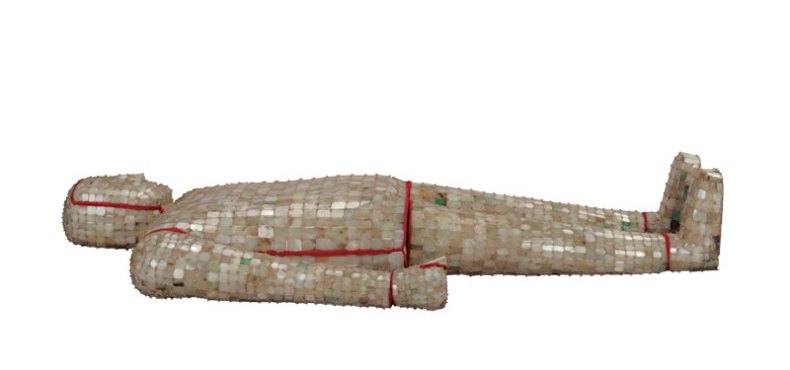
Jade suit (2nd century BC), Chinese, Western Han dynasty, jade. Xuzhou Museum, Jiangsu Province, China
Jade is a durable material that can survive burial for thousands of years, and is therefore linked in Chinese belief to immortality. In the records of Shi ji, the Han emperor Wudi believed that drinking dew and jade powder from a jade cup conferred longevity. He built a device for collecting dewdrops in the Jian Zhang Palace. The Baopuzi (‘Master who Embraces Simplicity’) by Ge Hong (c. 320) records that ‘When gold and jade are inserted into the nine orifices, corpses do not decay.’ The famous dictionary of Chinese herbs, Ben Cao Gang Mu (‘Compendium of Materia Medica’), written by Li Shizhen (1518–93), lists jade and other materials, such as agate, crystal and mica, as having magical powers that could cure diseases and confer longevity. The presence of such materials in earlier tombs seems to confirm this belief.
After the collapse of the Han Empire, jades were rarely used for burial purposes, but made into personal ornaments, trinkets, everyday utensils, and studio items for scholars. Objects that were made in materials such as ceramics, metal and rhinoceros’s horn were commonly rendered into jade. In Dong Jing Meng hua lu (‘The Eastern Capital: A Dream of Splendour’), Meng Yuanlao (active 1126–47) records that the selling of antiques, including jades, in the street markets of the capital was common during the Northern Song (960–1127). Jade ornaments were part of a bride’s dowry and gifts for a newborn baby. In the capital of the Southern Song at Lin’an (present-day Hangzhou), an establishment called the Seven Treasures Shop (qibao she) sold jade belt plaques, bowls, vases and dishes. These records indicate that possession of jade was no longer confined to the rich or high-ranking, but had become more widespread.
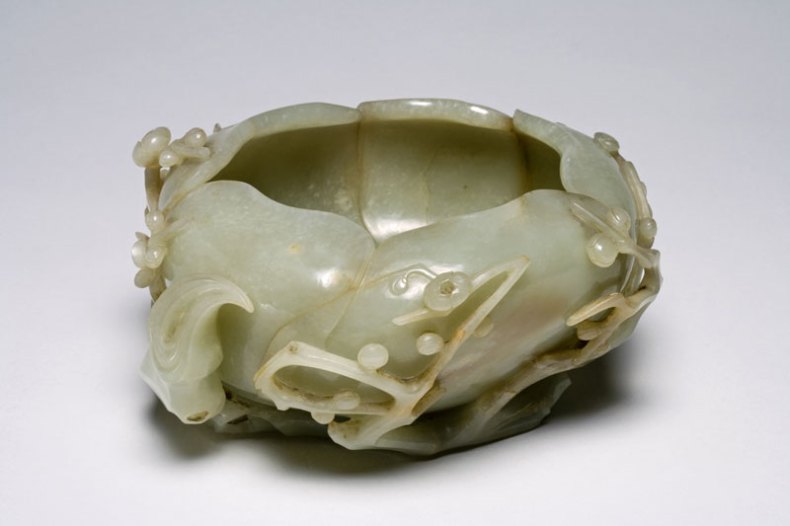
Jade brush washer, (16th century), Chinese, late Ming dynasty, jade. Fitzwilliam Museum, Cambridge
The use of jade reached another peak in Chinese history during the Ming (1368–1644) and Qing (1644–1911) dynasties but, again, jades were mainly used for decorative rather than for ritual purposes. Soon after Zhu Di overthrew his nephew and occupied the imperial capital in Nanjing in 1402, he was proclaimed emperor and adopted the era title as Yongle. In order to establish his legitimacy, he re-established Beijing as the capital, reopened the Grand Canal, compiled the Yongle Encyclopedia and launched seven expeditions to explore the world. Through contact with the Ottoman Empire, jade objects inlaid with precious stones and gems, which were popular in Islamic areas, became fashionable among Ming royal family members.
The economic prosperity in southern China during the Ming period and the rise of a merchant class led merchants to collect antiquities, alongside the nobility and scholars; this was a way for them to demonstrate their taste and wealth. Unfortunately, the increasing demand for antiquities stimulated the rise of forgery. A famous Ming text, Tian gong kai wu (‘Creations of Nature and Man’), states that workshops in Zhuan Zhu Alley (zhuan zhu xiang) in Suzhou had become a major jade-carving centre outside Beijing during the Ming dynasty. Although good craftsmen had always made their way to the capital, the most ingenious works actually came from Suzhou, and the craftsmen there were also very good at forging ancient jades, as mentioned in the Ming scholar Gao Lian’s Zun sheng ba jian (‘Eight Discourses on the Nurturing of Life’).
The expansion of Chinese territory and increase in foreign contact during the Qing dynasty (1644–1911) led to the import of materials such as nephrite from Khotan (Hetian), Xinjiang, jadeite from Burma, agate and crystal from the Yangzi river regions, along with lapis lazuli from Afghanistan. In addition, Mughal-style designs from India became fashionable at court. Jade from Khotan was particularly appreciated by the Qianlong Emperor (r. 1736–95) and is still highly valued in China today. In part this is because it is denser than other jades, giving it a smooth, warm feeling that cannot be emulated. Large nephrite jade boulders were transferred from Xinjiang to Beijing, and some were shipped by canal to Yangzhou for carving if the imperial workshop in Beijing could not complete required objects in time.
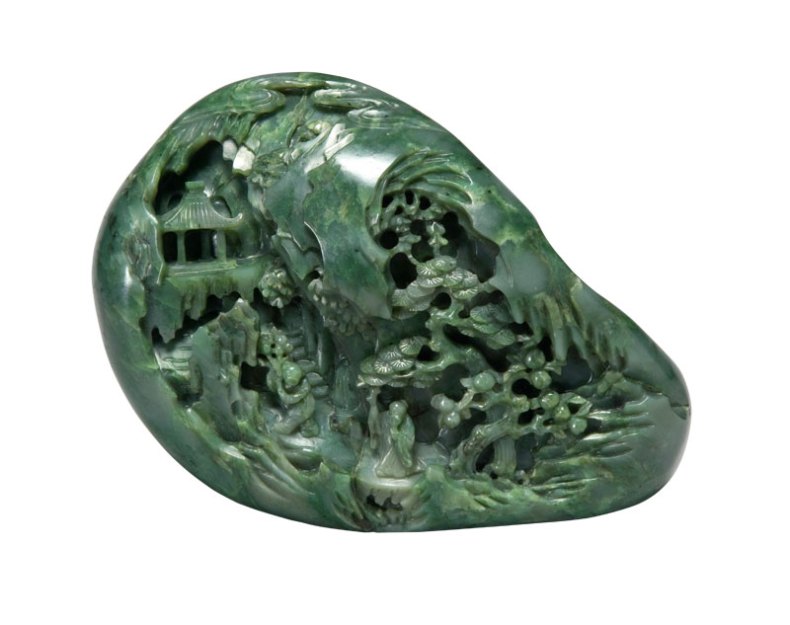
Jade boulder carved with Chinese landscape (18th century), Chinese, Qing dynasty, jade. Fitzwilliam Museum, Cambridge
The Qianlong Emperor was a great collector and played an influential role in Chinese art history. He is also known to have been a jade lover. His tastes influenced jade designs at court and also in the jade markets of Suzhou and Yangzhou. Apart from copying real objects from the imperial collection, woodblock prints provided inspiration for craftsmen. Qianlong also promoted the use of paintings as a source of images for jade carving. The treatment of jade
carving as a form of three-dimensional painting was not an invention of the Qing period but dates back to the Song dynasty, when landscape or flower-and-bird subjects were executed on jade pebbles. Nevertheless, the scale of production and the size of the jade boulders used during the Qing dynasty surpassed those of previous periods and became another feature of Qing-dynasty jade carving. From a poem by the emperor incised on the ‘jade mountain’ (yu shan), now in the Palace Museum, Beijing, we know that the decision to replicate paintings on a three-dimensional jade boulder was made simply because the material is durable and likely to last forever. As well as transferring paintings onto jade boulders, calligraphy and sometimes the emperor’s seals were also incised on to jade. Although the incision of calligraphy on mountains and stones has a long history in China, the Qianlong Emperor was the first and only emperor to carve his own poems on jade, porcelain and other objects.
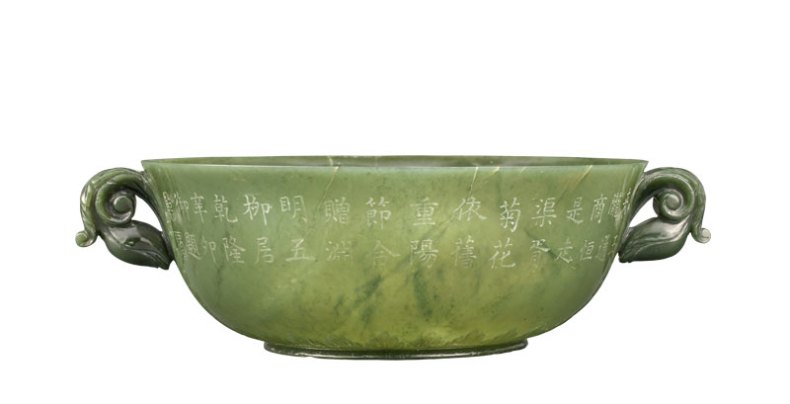
Jade bowl in Mughal style with poem (1771), Chinese, Qing dynasty, Qianlong period, jade. Musée du Louvre, Paris
The first Mughal jade came into Qianlong’s collection in 1756, when a tribe in Xinjiang paid a tribute to the court. After he defeated a rebellion by the Dzungar Muslims in 1759, the number of Mughal jades reaching the court increased each year. Although Qianlong criticised the Mughal jades in one of his poems, he wrote more than 50 poems about them, indicating that he was impassioned by their exotic design. He tried various ways to obtain them and even asked his workshop to imitate them. The high quality of these imitations has made it very difficult to identify which are the copies and which the originals.
The inexhaustible demand for jade has fuelled the production of a growing number of fakes. From the Song dynasty onwards, literati scholars’ interest in collecting antiquities to understand the past influenced the market. They were respected members of society and, as a result, the wealthy followed in their footsteps and such collecting became fashionable. This phenomenon was repeated several times in Chinese history when the economy was buoyant, as it is today. Nowadays, Chinese purchase jades for their aesthetic value, for investment and for use as bribes to officials. There is a huge demand in the market for ancient jades; faking techniques continue to improve and scams have become more professional. As a result, collecting jades continues but is much more challenging than at any other time in Chinese history.
From the November issue of Apollo: Preview and subscribe here.
Unlimited access from just $16 every 3 months
Subscribe to get unlimited and exclusive access to the top art stories, interviews and exhibition reviews.

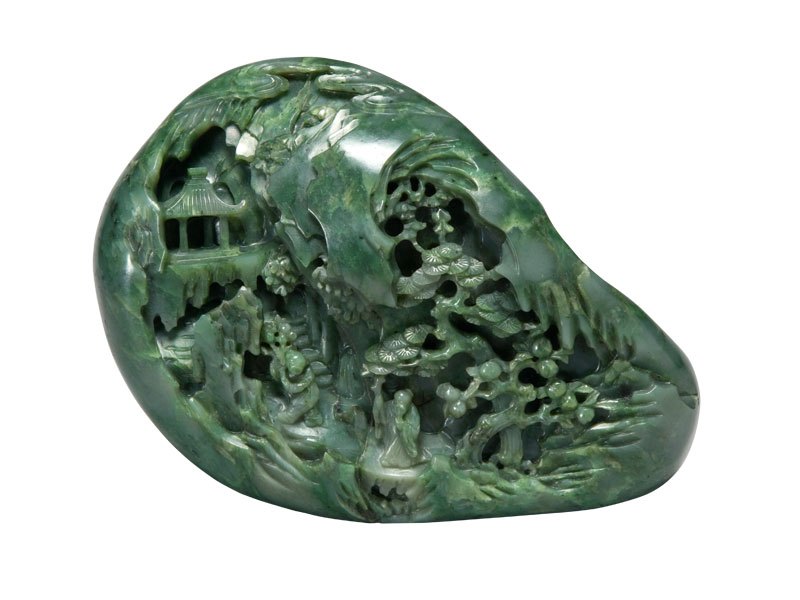

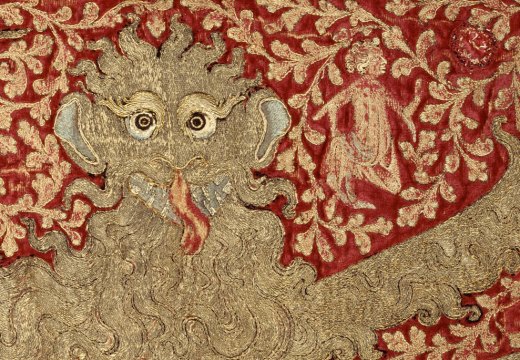
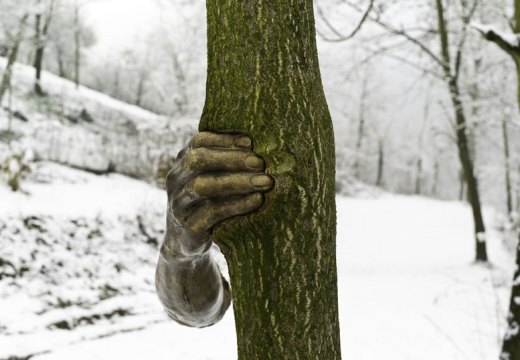









![Masterpiece [Re]discovery 2022. Photo: Ben Fisher Photography, courtesy of Masterpiece London](http://www.apollo-magazine.com/wp-content/uploads/2022/07/MPL2022_4263.jpg)
It’s time for the government of London to return to its rightful home